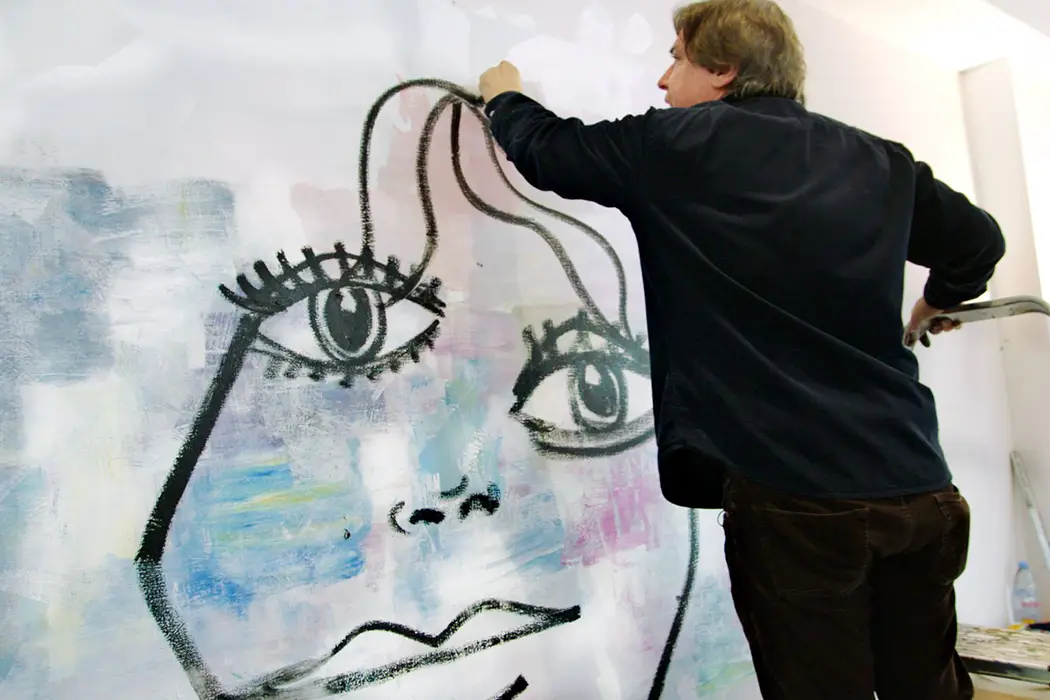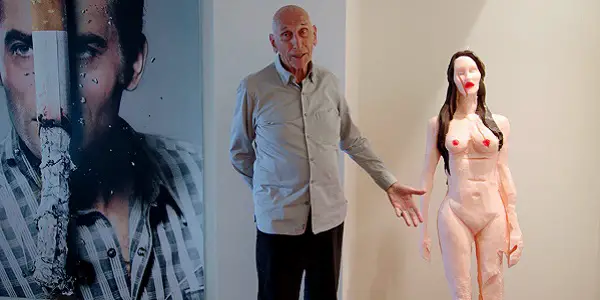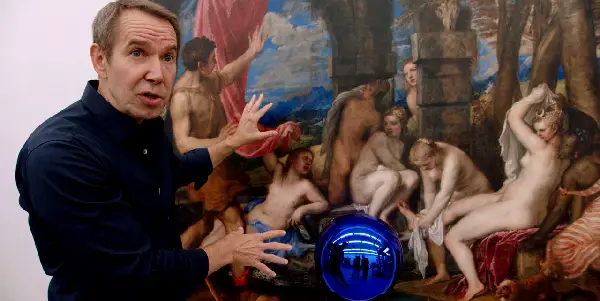THE PRICE OF EVERYTHING: A Colorful Glimpse Inside The Art Auction Bubble

Lee Jutton has directed short films starring a killer toaster,…
Can you imagine spending millions of dollars…on a painting? The growing population of people who do so on a regular basis is the subject of The Price of Everything, a documentary directed by Nathaniel Kahn (My Architect). From the galleries of Art Basel to the auction rooms at Sotheby’s, the film takes audiences on a whirlwind tour of the contemporary art world. It’s an increasingly rarefied world, obsessed with the absurdly inflated prices for which famous pieces can be bought and sold – and one that bears a disturbing likeness to the Dot-com bubble of the early 2000s. How long can the bubble last? Do we even want it to? The Price of Everything explores all sides of the debate and leaves you in a state of contemplation – something the best documentaries tend to do.
Seeing and Selling
The Price of Everything features interviews with numerous luminaries of the booming art economy, including Stefan Edlis, a famed art collector, plastics tycoon and philanthropist; Amy Cappellazzo, current Chairman of Global Fine Arts at Sotheby’s; Jerry Saltz, the Senior Art Critic for New York Magazine; and Mary Boone, a gallery owner who has helped elevate numerous artists into global stars. Edlis, in particular, is a fascinating figure. On one hand, he treats the various pieces of his collection as assets that he tracks in spreadsheets; on the other hand, he is truly passionate about certain pieces and artists and loves to be surrounded by their work.

It is a particularly telling Edlis quote that the film takes its title from: “There are people who know the price of everything but the value of nothing.” By the time The Price of Everything tells us that Edlis and his wife donated a collection of contemporary art worth $400 million to the Art Institute of Chicago, it becomes clear that Edlis, while an active participant in the insanity of the art market, knows that the value of a great piece is so much more than a number printed in an auction catalog. This is in contrast with someone like Cappellazzo, who despite getting involved in the art auction business because of her passion for great art, seems to be just as enraptured by the big numbers being called out during the film’s climatic auction at Sotheby’s as the works being sold.
Quality vs. Quantity
Of course, one mustn’t forget the artists themselves who appear in The Price of Everything, all of whom have different things to say about how the buying and selling of art have affected their ability to create. While Jeff Koons seems to take great pride in cranking out pieces with his crew of 100 assistants and selling them for tens of millions of dollars, other artists worry that the need to remain top of mind for high-flying collectors will cause them to crank out lesser works too quickly or to keep producing works of a certain style just to sell them. One thing that quickly becomes clear in The Price of Everything is that the creation of art should not be influenced by whether or not it will go for big bucks at an auction.

Rising Nigerian artist Njideka Akunyili Crosby creates beautiful paintings that are sought after by museums and collectors alike, but her labor-intensive style means she only produces about a dozen pieces a year, making her far less secure economically and far less of a household name than someone like Koons. Conversely, George Condo finds himself compelled to create a new piece every time a new idea enters his head – frequently – even though dealers tell him his work would be more valuable if there weren’t so much of it.
Meanwhile, Gerhard Richter, one of the world’s most influential living painters, sees his works go at auction for tens of millions of dollars, but notes that he’d rather see his pieces in a museum, where anyone of any class can come to see them and enjoy them; in a private collection, they only serve to benefit a much smaller audience. It’s essentially a socialist versus capitalist view of the art world – indeed, Cappellazzo describes Richter’s views as socialist with an air of mild disdain – and it’s clear with which side The Price of Everything agrees.
High Prices, Cheap Thrills
One of the film’s most charming interviewees, the legendary Larry Poons, retreated from the public eye after moving away from his signature dot paintings; his lack of a desire to aggressively market himself means that he’s less famous than many of his contemporaries, though he also wisely notes, “If I had gotten rich back then, I think I’d be dead.” Someone like Poons, refusing to sacrifice his artistic integrity for a big paycheck, comes off as far more admirable in The Price of Everything than Koons, who feels like the Jeff Bezos of the art world – constantly looking for new ways to make fast money at the cost of actually innovating.

Yet Koons isn’t the only one who has the economics of contemporary art infecting his creative process like a virus. A quick scan through various high-society art shows in The Price of Everything shows us how art has evolved to address the growing demands of collectors, and mostly not for the better. It’s an attitude epitomized by Maurizio Cattelan’s gold toilet being displayed in the Guggenheim. By focusing on what can quickly grab a potential buyer’s attention – what might shock and awe them instead of what might make them stop and think – modern art has become increasingly shallow. Is there a better reflection of today’s values? Perhaps not, but that doesn’t make it a more comforting thought.
The Price of Everything: Conclusion
As glossy, glamorous and fast-paced as the auctions it focuses on, The Price of Everything is a fun look inside an elite world that few of us could ever imagine entering. The film made me feel exceedingly uncomfortable with the way art is currently commodified, yet at the same time I couldn’t help but be fascinated by the various characters that make up this rarified sphere of society. It’s like a beautiful, paint-splattered car crash – terrible, but I can’t look away.
What do you think? Has the extreme commodification of art affected the quality of art being produced? Share your thoughts in the comments below.
The Price of Everything will be released in theaters in the U.S. on October 19, 2018 and will air on HBO on November 12, 2018. You can find more international release dates here.
Does content like this matter to you?
Become a Member and support film journalism. Unlock access to all of Film Inquiry`s great articles. Join a community of like-minded readers who are passionate about cinema - get access to our private members Network, give back to independent filmmakers, and more.
Lee Jutton has directed short films starring a killer toaster, a killer Christmas tree, and a not-killer leopard. Her writing has appeared in publications such as Film School Rejects, Bitch: A Feminist Response to Pop Culture, Bitch Flicks, TV Fanatic, and Just Press Play. When not watching, making, or writing about films, she can usually be found on Twitter obsessing over soccer, BTS, and her cat.













